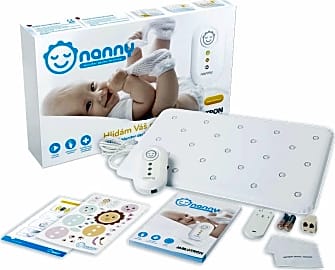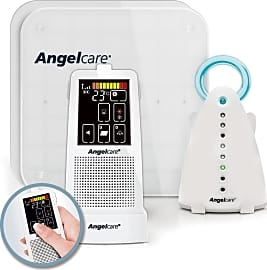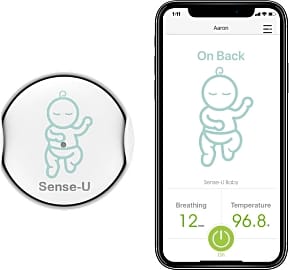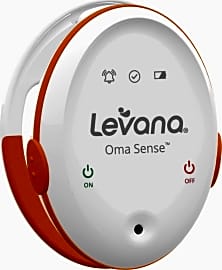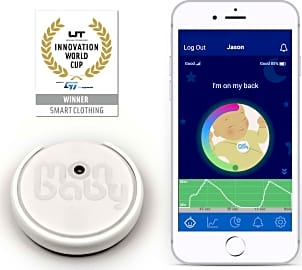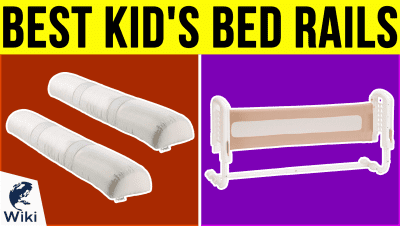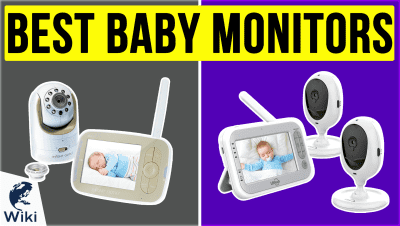The 8 Best Baby Movement Monitors

This wiki has been updated 38 times since it was first published in April of 2015. Knowing that your baby is moving and breathing in his or her crib can provide you with some peace of mind, but it's no substitute for diligent parenting, checking in on your child on a regular basis, and ensuring their sleeping area is as safe as possible. If you and your doctor agree that a movement monitor is a smart addition to a strong safety regimen, you're sure to find great choices here. When users buy our independently chosen editorial choices, we may earn commissions to help fund the Wiki.
Editor's Notes
February 06, 2020:
Let's be clear: you can't just strap one of these things onto your kids diaper or lay one under a sheet and expect it to keep them safe all on its own. And safety is paramount when creating a nursery environment or a traveling system for your child. It's important to stress that the dangers your baby will encounter on a daily basis are legion, and that a movement monitor might help stem that tide, but that it's by no means a one-and-done solution. You'll still need to check in on them regularly, keep any and all hazards — even seemingly innocuous things like stuffed animals — out of the crib or sleeping area, and consult with your doctor for their opinion about using such a device with your unique tyke.
While the focus here is on high-quality movement monitors, there are some systems that combine movement coverage with more traditional audio monitors or high-tech video units. The Angelcare Breathing Sensor AC517 is one such comprehensive offering, with a 4.3-inch color touchscreen and the ability to generate useful reports on motion and temperature.
We lost some of the older Angelcare systems from our previous list, but kept the Angelcare AC701, which is a fantastic audio system with a thorough informational readout. And given its no-contact design and excellent app, we really wanted to like the Levana Oma Sense Portable better, but it's so sensitive that things like car rides, swings, and even rocking cribs can set it off, severely limiting its potential usage, and keeping it farther back in our ranking.
Your Safely Slumbering Child
But providing the best level of child safety also means making sure a young one is safe while he or she is sleeping.
There is nothing more important for a parent or caregiver to supply to a child than safety. This means everything from baby gates to secured cabinets and doors, and protected corners that keep a child safe while he or she crawls or walks about. It means making sure all accessible toys and household items don't create a choking or strangulation hazard. It means the consideration of so many other factors that enumerating them individually is a herculean task; childhood safety comes down to near constant adult supervision while the youngster is awake and active.
But providing the best level of child safety also means making sure a young one is safe while he or she is sleeping. Achieving a safe sleeping environment for a child is contingent upon an age appropriate bedding arrangement. While for a child beyond the toddler years this may involve nothing more than a regular bed set relatively low above the floor — and potentially with a bed rail for added safety against an accidental roll out and fall — it is a much more involved process to set up the ideal sleeping arrangement for infants and young toddlers.
When it comes to putting an infant down for a nap or bedtime, first and foremost a caregiver must always place the child on his or her back. This approach, the Back to Sleep method, as it is called by pediatricians and the larger healthcare establishment, has helped lead to a 60-percent reduction in Sudden Infant Death Syndrome since it became the firmly established practice in the mid 1980s. It's also important that younger babies have little to nothing else in the crib or bassinet with them. Any blanket, pillow, toy, or stuffed animal can become a hazard for suffocation or choking; small children should sleep in comfortable, but snug fitting clothes and swaddling blankets with nothing else nearby.
A child sleeping on his or her back with no loose objects in their sleeping area is as safe as they can be for slumber. To add another layer of protection, the concerned caregiver can also consider using a baby movement monitor.
Is A Baby Movement Monitor Right For Your Home?
As the name suggests, baby movement monitors detect the movement of a child while they are in their crib or bassinet. Or rather, to be more specific, most of the monitors are designed to detect a lack of movement that might be associated with a potentially serious issue. Many baby movement monitors are sensitive enough to detect the subtle, rhythmic breathing of a small child, and to sound the alarm if they detect breathing motions have stopped.
The extreme sensitivity of these monitors can lead to a number of false alarms throughout the months or even years during which you'll use your unit.
The extreme sensitivity of these monitors can lead to a number of false alarms throughout the months or even years during which you'll use your unit. If a monitor slips out of place or your child shifts such that the monitor can no longer detect his or her movements, you will be summoned to the child's room, often after being roused from your own precious sleep, due to a false reporting issue.
For any child at heightened risk for breathing difficulties, cardiac complications, or for any other medical issue that might necessitate immediate intervention, lack of sleep from false alarms is a more acceptable price to pay to ensure your child's safety than the grim alternative.
If your young one has medical complications that warrant extra monitoring, don't settle for an audio and video monitor alone; by all means consider a baby movement monitor that detects every breath he or she takes.
Choosing The Best Baby Movement Monitor
There are two basic types of baby movement monitors: those that are actually affixed to the slumbering child, and those that slide under a mattress or attach to another part of a crib, bassinet, or bed. In the former category, you can consider both options that attach to the child's clothing or that rest right on the baby's stomach, often tucked into the band of a diaper or pajama pant.
Many parents consider pairing baby movement monitors with audio and/or audio/visual monitors to create the ideal monitoring setup.
These hyper sensitive monitors offer the most accurate information about a child's breathing and even about his or her heart rate, but they are also the most likely to send false alarms. And keep in mind that a false alarm can be worse than annoying; with too many instances of a false alarm, they can become desensitizing, as well.
Baby movement monitors that slide under a sheet or mattress have their positive attributes, such as being less invasive for a sleeping child. But they are also going to be less sensitive to minute information such as child's heart rate. If your child is generally healthy and sleeps well, this type of unit might be perfect for a bit of added peace of mind. Many parents consider pairing baby movement monitors with audio and/or audio/visual monitors to create the ideal monitoring setup.
An advantage offered by some baby movement monitors is a vibration feature that can gentle stimulate the baby to move: seeing this movement on a video monitor can instantly reassure a parent that their child is indeed alive and responsive without the need for the adult to enter the room and further interrupt their child's sleep.



